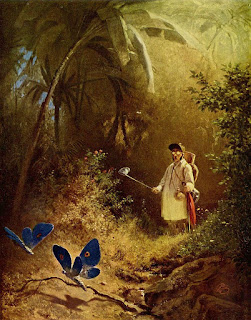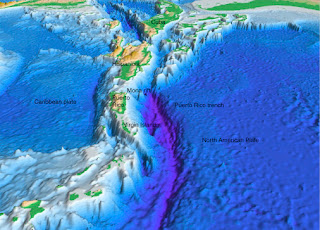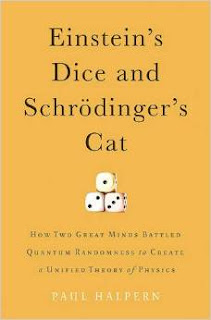Rainer Jaenicke 1930-2016
My old professor or Doktorvater, as we like to call PhD supervisors in Germany once the title is in the bag, died at the end of July aged 85. Throughout our shared project (one year final year thesis plus three years doctoral thesis) he was a generous friend more than a boss, and remained one in the 23 years after. So, I’ll try to honour him with an obituary, which is not a format I have often had to write, but as time goes on, one does tend to have more farewells to make. Here’s my first attempt, I may add to it later.
Rainer Jaenicke was the youngest of the four children of a semi-famous chemist, Johannes Jaenicke (1888-1984), who during the Weimar Republic was the assistant of Nobel Laureate Fritz Haber, assisting, among other projects, with the doomed attempt to isolate gold from sea water to pay off Germany’s debt, and his wife Erna Buttermilch (1895-1961).
Johannes Jaenicke spent much of his long life meticulously compiling material for a biography of the great chemist and controversial figure (Haber’s ammonia synthesis process produces half the nitrogen contained in the bodies of the world population, but he also pioneered the use of chemical weapons), but, as he lost his eyesight with age, he ended up being unable to write it. All existing biographies of Haber are based on Johannes Jaenicke’s extensive collection, which has been archived by the Max Planck Society.
His three sons all became professors of some kind of chemistry. Walther Jaenicke (1921-2011) of physical chemistry at the University of Erlangen-Nürnberg; Lothar Jaenicke (1923-2015) of biochemistry at Cologne, and Rainer Jaenicke of biophysical chemistry at Regensburg.
The one thing I know about Rainer Jaenicke’s childhood in Frankfurt is that at age 13, he teamed up with a young pianist who accompanied his flute playing, Agathe Calvelli-Adorno. They lived happily ever after, as they say, and played music together for over 70 years.
Both families had partial Jewish background and suffered for it during the Nazi time, but made it through. Her Jewish grandmother was deported to concentration camp Theresienstadt and died soon after liberation. The Jaenicke brothers saw their career options limited by being fractionally Jewish according to the Nazi arithmetics (through their mother) but made up for it after the end of the “1000 years”.
Rainer Jaenicke married his pianist just before he obtained his PhD in physical chemistry with Hermann Hartmann (1914-1984) in Frankfurt, started a family, and got his Habilitation in 1963. With their children, they set off to Pittsburgh, Pennsylvania, where he worked with Max Lauffer (1914-2012) until 1969. Soon after his return he secured a professorship at the newly founded University of Regensburg, Bavaria. He took the chair for biophysical chemistry, which he held until his retirement in 1999. I believe he also served on the committee that commissioned / chose the around 30 major artworks that are scattered around the campus. For a project of this size it was a legal obligation to have a certain amount of “Kunst am Bau”, and there is a nice little book, called “Rund um die Kugel,” discussing all the artworks.
From the US, he brought back the research interest of protein assembly systems such as tobacco mosaic virus (TMV) – a classical system to study self-assembly which in my student days was still used in the practical biochemistry course in his department. From there, his research interests widened to protein folding and stability, including stability under extreme physical conditions like salinity, high and low temperatures and high pressures, which is where my thesis happened.
By the 1990s, one of his trademarks was to keep old-fashioned physical methods of analysis alive, especially analytical ultracentrifugation. This method involves spinning a sample so fast (40,000 rpm would be a typical speed) that large molecules such as proteins are gradually pulled out of solution by the centrifugal force. And this happens in a transparent cell, such that one can shine light through the sample and actually watch the molecules go down.
During my time in the lab (1989-1993) he kept two Beckman model E centrifuges alive and spinning, which was an achievement in itself, as the company had stopped making and indeed servicing these instruments, each the size of a generously-proportioned wardrobe, some time in the 1980s. Several dead machines in the basement were cannibalised for spares. As he was reluctant to persuade students to dedicate three or four years of their lives to an extinct technology, he did many of the centrifugation runs himself, and had great fun fiddling around with the machines.
And right he was too, because around that time, Beckman changed their mind and decided to develop a new instrument from scratch. I vividly remember Howard Schachman (1918-2016 - he died a week after RJ) visiting the lab, another model E aficionado, recalling how the company asked him for advice. As they had closed down the relevant department many years ago and fired everybody who knew anything about analytical ultracentrifuges, they were facing an uphill struggle trying to build a new one. But they got there in the end, and the instruments are now a bit more compact, so they can sit on a lab bench and feed their results to a computer.
As a supervisor, he was very generous with ideas, suggestions and help in establishing collaboration opportunities. I had collaborations with five labs outside Regensburg, four of which he enabled with phone calls to the relevant group leaders (the fifth was someone I met at a conference). While always ready to offer this kind of help and support, he never ever told me what to do – I had a rather painful awakening when I moved on to a postdoctoral fellowship in the UK and lost some 95% of the freedom I had been used to.
Part of the reason for my freedom was in the fact that during my doctoral thesis I was the only person in the lab working on the effects of high hydrostatic pressure. There were crowds of protein folding people and of those doing thermal stability, a few looking at salinity. Thus, there was no need for higher level co-ordination, there was no risk of my work overlapping anybody else’s, and I could basically do whatever I wanted. In this situation, as my own sub-group leader, and as I was also writing my own papers from day one, I put the asterisk indicating the correspondence author behind my name, just on the naïve assumption that he wouldn’t want to be troubled with the paperwork. He never queried that – only when we wrote a review together after I left the lab did he regain the asterisk, which any other professor would have claimed as their statutory right throughout.
Incidentally, he didn’t try to steer his children into a certain direction either. His daughter became a nurse, his sons an actor and an artist. He always highlighted their career choices – very unusual for a family of chemists – with pride, contrasting them to the children of colleagues (presumably including, though not mentioning, his brother) who were groomed to follow in the scientific tradition.
During my Regensburg years, I gained the impression that he had never really adapted to the Bavarian temperament of the people around him. Regensburg being a modern university serving a regional constituency (as opposed to the ancient universities like Heidelberg which attract students from all of Germany and indeed abroad), even most of the faculty colleagues had a conspicuous regional accent - not just in their language but also in their thinking and (conservative) worldview. He probably found he had more in common with the many international visitors he invited to Regensburg than with his immediate colleagues and next-door neighbours.
Thus, even though regulations for professors of his generation would have enabled him to use university facilities as an emeritus indefinitely, it was no big surprise to hear that in the late 1990s, after retiring at 68, he moved to the small town of Schwalbach am Taunus, within S-Bahn commuting distance of the city of Frankfurt, which he routinely referred to as home. The couple bought a bungalow – modest looking on the ground floor, but with a basement doubling the area and providing an impressive exhibition space for works of their artist son, Alexander Calvelli, as well as other graphic works which they collected. There were also guest rooms complete with musical instruments – visitors had the choice of sleeping in the presence of a harpsichord or a grand piano.
For nearly two decades, they kept a busy social and musical life at Schwalbach. The last time I visited, in the spring of 2014, the onset of memory loss was noticeable, although he could still play music. His condition gradually worsened to cut him off from the outside world, with the impressions from music remaining the last connection.

some items from my collection of RJ memorabilia ...












































